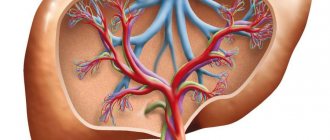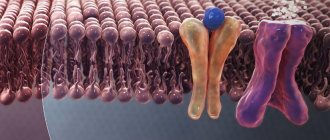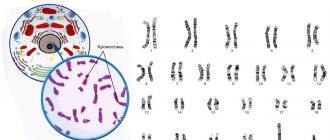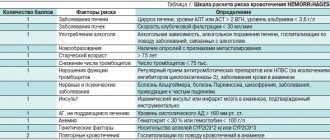Introduction
In Guillain-Barré syndrome, the person's immune system attacks part of the peripheral nervous system. This syndrome may affect the nerves that control muscle movement or transmit pain, temperature, and touch sensations. This can lead to muscle weakness and loss of sensation in the legs and/or arms.
This is a rare disease that can affect people of any age, but it is most common in adults and men.
Symptoms
Symptoms usually last several weeks, and most people recover without any long-term, severe neurological complications.
- The first symptoms of Guillain-Barré syndrome include weakness or tingling sensations. They usually start in the legs and can then spread to the arms and face.
- For some people, these symptoms can lead to paralysis of the legs, arms, or facial muscles. In 20%-30% of people, the chest muscles are affected, making breathing difficult.
- In severe cases, Guillain-Barré syndrome can impair the ability to speak and swallow. These cases are considered life-threatening and such patients should be treated in intensive care units.
- Most people make a full recovery from even the most severe cases of Guillain-Barré syndrome, although some continue to experience weakness.
- Even under the best conditions, 3% to 5% of patients with Guillain-Barré syndrome die from complications, which may include paralysis of the respiratory muscles, blood infection, blood clot in the lungs, or cardiac arrest.
Guillain-Barre syndrome - symptoms
First, there are unexplained sensations such as tingling in the legs or arms or even pain (especially in children), often starting in the legs or back. Children also experience difficulty walking, even complete paralysis. These sensations usually disappear before the main long-term symptoms appear. Weakness on both sides of the body is the main symptom that prompts most people to seek medical help. Weakness may first manifest as difficulty climbing stairs or walking. The arms, breathing muscles, and even the face are often affected, reflecting more common nerve injuries. Sometimes symptoms begin in the upper body and move to the legs and feet.
For most people, weakness is greatest within the first two weeks after symptoms begin; by the third week, 90% of patients experience maximum weakness.
In addition to muscle weakness, symptoms may include:
- Difficulty moving the eyes and blurred vision;
- Difficulty swallowing, speech and chewing disorders;
- Tingling or pricking sensation in the arms and legs;
- Pain that may be worse especially at night;
- Problems of coordination and instability;
- abnormal heartbeat and blood pressure;
- Problems with digestion or urinary control.
These symptoms can worsen over several hours, days or weeks until some muscles stop working altogether, and in severe cases the person becomes almost completely paralyzed. In these cases, GBS is life-threatening—potentially affecting breathing and sometimes blood pressure or heart rate.
In a healthy body, the myelin sheath surrounding the axon speeds up the transmission of nerve signals and allows signals to be transmitted over long distances. When we move, an electrical signal from the brain travels through the spinal cord and out to the peripheral nerves along the muscles of the legs, arms, and motor nerves.
In most cases of GBS, the immune system damages the myelin sheath that surrounds the axons of many peripheral nerves; however, GBS can also damage the axons themselves. As a result, the nerves cannot transmit signals effectively, and the muscles begin to lose the ability to respond to commands from the brain. This causes muscle weakness. The weakness seen with GBS usually comes on quickly and worsens over a period of hours or days. Symptoms are usually symmetrical on both sides. In addition to weakness in the limbs, the muscles that control breathing may weaken to the point that a person has difficulty breathing.
Sensitivity changes
Because nerves are damaged in GBS, the brain may receive the wrong sensory signals from the rest of the body. This results in unexplained, spontaneous sensations called paresthesias, which can feel like tingling, the sensation of insects crawling under the skin, and pain. Deep muscle pain in the back and/or legs may occur.
Causes
Guillain-Barré syndrome is often preceded by some kind of infection, which can be bacterial or viral. The development of Guillain-Barre syndrome can also be triggered by vaccination or surgery.
In the context of Zika virus infection, an unexpected increase in the number of cases of Guillain-Barré syndrome has been noted in affected countries. The most likely explanation for the available evidence regarding outbreaks of Zika virus infection and Guillain-Barré syndrome is that Zika virus infection is a contributing cause of Guillain-Barré syndrome.
Diagnostics
Diagnosis is based on symptoms and neurological examination findings, including decreased or loss of deep tendon reflexes. A spinal tap may be performed to obtain supporting information, but this should not lead to a delay in treatment.
Diagnosing Guillain-Barré syndrome does not require other tests, such as blood tests, to determine the cause of the syndrome, and these tests should not lead to delays in treatment.
Guillain-Barre syndrome - pathogenesis
There are various theories about the development of GBS. According to the theory of molecular mimicry
, the molecules on some nerves are very similar to or mimic the molecules of some microorganisms. And if the microorganism and the myelin look the same, the immune system makes a mistake and attacks the myelin. Various mechanisms may explain how the concept of molecular mimicry may work. When Guillain-Barré syndrome is preceded by a viral or bacterial infection, it is possible that the pathogen changes the chemical structure of some nerves. The immune system treats these nerves as foreign bodies and mistakenly attacks them. It's also possible that the virus makes the immune system less picky. Some structures of the immune system - white blood cells called lymphocytes and macrophages - perceive myelin as foreign and attack it. Specialized white blood cells called T lymphocytes (from the thymus gland) interact with B lymphocytes (which come from the bone marrow) to produce antibodies against a person's own myelin and damage it.
In some forms of GBS, antibodies produced by a person to fight the bacterial infection Campylobacter jejuni
, attack axons in motor nerves. This causes acute motor axonal neuropathy, which is a variant of GBS, including acute paralysis and decreased reflexes without sensory loss. Campylobacter infections can be caused by eating contaminated food or other exposures. The infected person's body then produces antibodies against Campylobacter. Some Campylobacter molecules resemble molecules in human nerve axons, so when a person's antibodies fight Campylobacter, they also attack similar axons. This slows nerve conduction and causes paralysis. Scientists are studying different subtypes of GBS to find out why the immune system reacts abnormally in this syndrome and other autoimmune diseases.
What disorders are associated with GBS?
The most common type of GBS is acute inflammatory demyelinating polyradiculoneuropathy (AIDP)
.
In AIDP, the immune response damages the myelin sheath and disrupts the transmission of nerve signals. In the other two types of Guillain-Barré syndrome, acute motor axonal neuropathy (AMAN)
and
acute motor sensory axonal neuropathy (MSAN)
, the axons themselves are damaged by the immune response.
Miller-Fisher syndrome
is a rare acquired disease of the nervous system, which is a type of Guillain-Barré syndrome. The disease is characterized by poor muscle coordination with poor balance and an unsteady gait, muscle weakness or paralysis of the eye muscles, and absence of tendon reflexes. As with GBS, symptoms may follow a viral illness. Additional symptoms include generalized muscle weakness and respiratory failure. Most people with Miller Fisher syndrome have unique antibodies that characterize the disorder.
Associated peripheral nerve diseases with slow onset and persistent or recurrent symptoms include chronic inflammatory demyelinating polyneuropathy
(CIDP)
and
multifocal motor neuropathy
. CIDP also causes muscle weakness, which can recur many times over many years. Multifocal motor neuropathy usually affects many different muscles in a small part of a limb. Symptoms usually appear more on one side of the body.
Treatment and care
The following are recommendations for the treatment and care of patients with Guillain-Barré syndrome:
- Guillain-Barre syndrome is potentially life-threatening. Patients with Guillain-Barré syndrome are usually hospitalized and closely monitored.
- Symptomatic treatment includes monitoring breathing, heart rate and blood pressure. If breathing becomes compromised, the patient is usually placed on a ventilator and monitored for complications, which may include abnormal heartbeats, infections, blood clots, and high or low blood pressure.
- There is no cure for Guillain-Barré syndrome, but treatment can reduce the symptoms of Guillain-Barré syndrome and shorten their duration.
- Given the autoimmune nature of the disease, immunotherapy such as plasma replacement to remove antibodies from the blood or intravenous immunoglobulin is usually given during its acute stage. This treatment is most effective when given 7 to 14 days after symptoms begin.
- If muscle weakness persists after the acute stage of the disease, patients may require rehabilitation services to strengthen muscles and restore motor function.
Guillain-Barré syndrome is a disease in which the sheath of nerve fibers (myelin) is destroyed, which leads to impaired movement and sensitivity disorders. Usually develops some time after an infection.
Myelin is a special sheath of nerve fibers that is necessary for conducting nerve impulses. In Guillain-Barré syndrome, it is destroyed by the body's own immune system. Normally, the immune system detects and destroys foreign objects (for example, pathogens of infectious diseases), but in some cases it begins to fight native cells. As a result of damage to the myelin sheath, manifestations of the disease occur: decreased muscle strength, tingling in the limbs, etc. Most patients require hospitalization.
Timely treatment allows a complete recovery to be achieved, although some people may still experience muscle weakness and a feeling of numbness.
Synonyms Russian
Acute inflammatory demyelinating polyradiculoneuropathy, acute polyradiculitis.
English synonyms
Guillain-Barre syndrome, Acute Idiopathic Polyneuritis, Acute Inflammatory Demyelinating Polyradiculoneuropathy.
Symptoms
- Decreased muscle strength, tingling - first in the legs, then in the overlying parts of the body
- Intense pain in the shoulder girdle, back, hips
- Impaired chewing, swallowing, sound pronunciation, and facial expressions as a result of decreased strength of the muscles performing these functions
- Increased or slowed heart rate
- Increased or decreased blood pressure
- Respiratory disorders, the worsening of which may require artificial ventilation (carried out with a special apparatus when spontaneous breathing is ineffective)
- Urinary retention
- Constipation
General information about the disease
Guillain-Barré syndrome is a disease in which the myelin sheath of nerves is destroyed, resulting in impaired transmission of nerve impulses and decreased muscle strength.
The exact causes of the disease are unknown. In most cases, symptoms appear 1-3 weeks after an acute infection of the respiratory system or gastrointestinal infections.
These infections can be caused by these and other pathogens:
- Campylobacter - found in the meat of infected birds and causes a gastrointestinal infection when ingested by humans;
- influenza virus;
- Epstein-Barr virus (the causative agent of infectious mononucleosis);
- mycoplasma – can cause pneumonia in people infected with the immunodeficiency virus (HIV).
Vaccinations and surgical interventions can also be trigger factors for the development of the disease.
Autoimmune mechanisms also play an important role. The immune system fights foreign objects that enter the body. In response to infection, special protein particles called antibodies are produced. They detect and neutralize various infections and viruses. According to researchers, in Guillain-Barre syndrome, antibodies not only destroy infectious agents, but also damage the membrane of nerve cells, this is possible due to the similarity in the molecular structure of these objects.
The myelin sheath covers nerve fibers and ensures a certain speed of nerve impulses between the brain and various structures of the body. Disruption of the passage of nerve impulses to muscle fibers leads to a decrease in muscle strength. The nerve fibers of the autonomic nervous system (which regulates the activity of internal organs) are also affected. In this case, the functioning of the cardiovascular system may be disrupted, heart rhythm, blood pressure, etc. may change.
In severe forms of the disease, the following complications are possible.
- Breathing problems. It occurs as a result of weakness or paralysis (complete lack of ability to move) of the respiratory muscles and threatens the patient’s life. In cases where spontaneous breathing is ineffective, artificial ventilation of the lungs is performed (using a special device).
- Disturbances in the functioning of the cardiovascular system.
- Prolonged immobility. Increases the risk of thromboembolism (blockage of blood vessels with blood clots, leading to poor circulation).
- Bedsores are dead skin and underlying soft tissues that occur during prolonged immobility of patients due to impaired blood supply.
The disease develops over several weeks, and it may take several months to restore lost functions. In most cases, complete recovery occurs.
Who is at risk?
- Persons of young and old age.
- Patients with certain types of infectious diseases.
- Having undergone surgery.
Diagnostics
Diagnosis of Guillain-Barre syndrome is quite difficult, since there are no specific studies to identify it. In this case, diagnosis is based on an analysis of clinical manifestations, study of the history of the disease, and tests to exclude other diseases of the nervous system.
Laboratory diagnostics is of great importance.
- Total protein in liquor. Cerebrospinal fluid (CSF) bathes the brain and spinal cord. Various diseases of the nervous system cause certain changes in its composition. In Guillain–Barre syndrome, the level of protein in the cerebrospinal fluid increases.
To exclude other diseases, the following laboratory tests may be required:
- General blood analysis. Allows you to determine the number of formed elements in the blood: red blood cells, leukocytes, platelets. A decrease in the number of red blood cells and hemoglobin is possible with anemia, an increase in the level of leukocytes is possible with various inflammatory processes.
- Erythrocyte sedimentation rate (ESR). This indicator deviates from the norm in various diseases, in particular it increases during inflammatory processes in the body.
- Determination of vitamin B12 (cyanocobalamin) levels. If there is insufficient amount of vitamin B12 in the body, anemia and disturbances in the functioning of the nervous system may develop. Some symptoms of nervous system damage in B12 deficiency anemia are similar to those of Guillain–Barré syndrome.
- Detection of heavy metals in urine. The accumulation of heavy metals (for example, lead) in the body contributes to damage to the nervous system and the development of polyneuropathy (damage to various nerves).
Other studies:
- Electromyography. Allows you to record electrical impulses that travel along the nerves to the muscles. The conductivity of nerve fibers is assessed by their intensity; for this purpose, special electrodes are applied to the muscle being studied. The study is performed in a calm state and during muscle contraction.
Additional Research
- Magnetic resonance imaging (MRI). A diagnostic method based on the effect of a magnetic field on the human body. After processing the received signals, layer-by-layer images of the internal structures of the body are obtained. Allows you to exclude the presence of other diseases of the nervous system (for example, space-occupying formations).
Treatment
Treatment of the disease is conservative. Various drugs are used to eliminate individual manifestations of the disease and combat complications of Guillain-Barré syndrome.
The most effective methods are:
- Plasmapheresis. The patient's blood is taken, which is divided into a liquid part (plasma) and a part containing blood cells (erythrocytes, leukocytes, platelets). The blood cells are then returned to the person's body, and the liquid portion is removed. This achieves a kind of purification of the blood from antibodies that can destroy the myelin sheath of the nerves.
- Administration of immunoglobulin intravenously. Immunoglobulin contains antibodies from healthy blood donors. They block the destructive effect of the patient's antibodies on the nerve sheath.
It is very important to maintain impaired body functions (artificial ventilation), carefully care for the patient, and prevent complications associated with prolonged immobility of patients.
During the recovery period, physical therapy and physiotherapy are used to restore the strength of various muscle groups.
Prevention
There is no specific prevention for Guillain–Barre syndrome.
Recommended tests
- Total protein in liquor
- General blood analysis
- Erythrocyte sedimentation rate (ESR)
- Vitamin B12 (cyanocobalamin)
- Lead in urine
Literature
- Dan L. Longo, Dennis L. Kasper, J. Larry Jameson, Anthony S. Fauci, Harrison's principles of internal medicine (18th ed.). New York: McGraw-Hill Medical Publishing Division, 2011. Chapter 385. Guillain-Barré Syndrome.
- Corey Foster, Neville F. Mistry, Parvin F. Peddi, Shivak Sharma, The Washington Manual of Medical Therapeuticts (33rd ed.). Lippincott Williams & WilkinsPhiladelphia, 2010.23 Neurologic Disorders. Guillain-Barré Syndrome.
WHO activities
WHO is supporting countries in the management of Guillain-Barré syndrome in the context of Zika virus infection by:
- improving surveillance of Guillain-Barré syndrome in countries affected by Zika virus;
- providing guidelines for the assessment and management of Guillain-Barré syndrome;
- supporting countries to implement guidelines and strengthen health systems to better manage cases of Guillain-Barré syndrome;
- defining a research agenda for Guillain-Barré syndrome.








